The Omega Seamaster Planet Ocean Ultra Deep O-MegaSteel Collection (Live Pics & Price)
There’s a stand-alone titanium version, and then there’s a full collection of ultra-dive watches in not-so-classic steel cases.
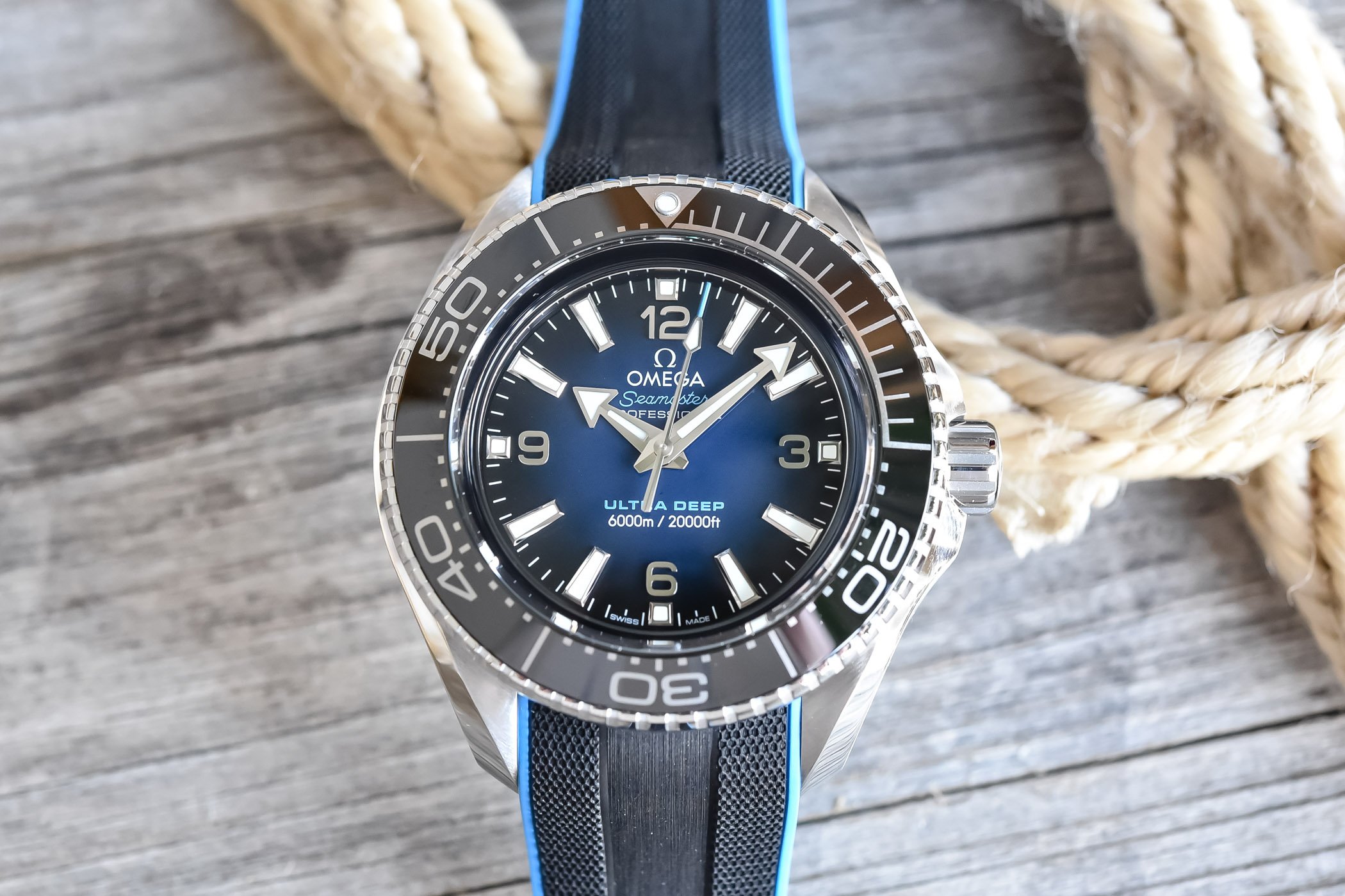
As we’ve explained in the article talking about the titanium edition, Omega is releasing this year an ultra-dive watch, a model that summarizes everything the brand does best, mechanically and regarding resistance to all possible external elements. Based on the lessons learned with the Planet Ocean Ultra Deep Professional that reached the deepest point in the ocean during the Five Deeps Expedition to the Mariana Trench, Omega now releases what’s basically a barely-downgraded version available for a wide audience, the Omega Seamaster Planet Ocean Ultra Deep 6,000m. One of the toughest mechanical dive watches ever created (almost to prototype levels), it’s also available as a complete collection of steel watches, but Omega being Omega, the R&D team decided that they needed a new steel alloy, and it’s named O-MegaSteel.
Born in 1948, the Seamaster collection is surely the one that bears most of the brand’s innovations. Looking at the recent history, the collection is now divided in 4 ranges; the classic Seamaster Diver 300m (also known as the Bond Watch), the more casual and civilian Seamaster Aqua Terra 150m, the vintage-inspired and freshly revamped Seamaster 300 that pays tribute to the first professional version of 1957 and finally, the Seamaster Planet Ocean 600m, the most robust and advanced watch within the collection. The latter was launched in 2005 and has since known multiple evolutions, with the addition of ceramic bezels and new movements, such as the recent Master Chronometer Calibre 8900. And now that the Ploprof 1200M has been discontinued, there’s an empty space in the collection for a true professional deep-dive watch.
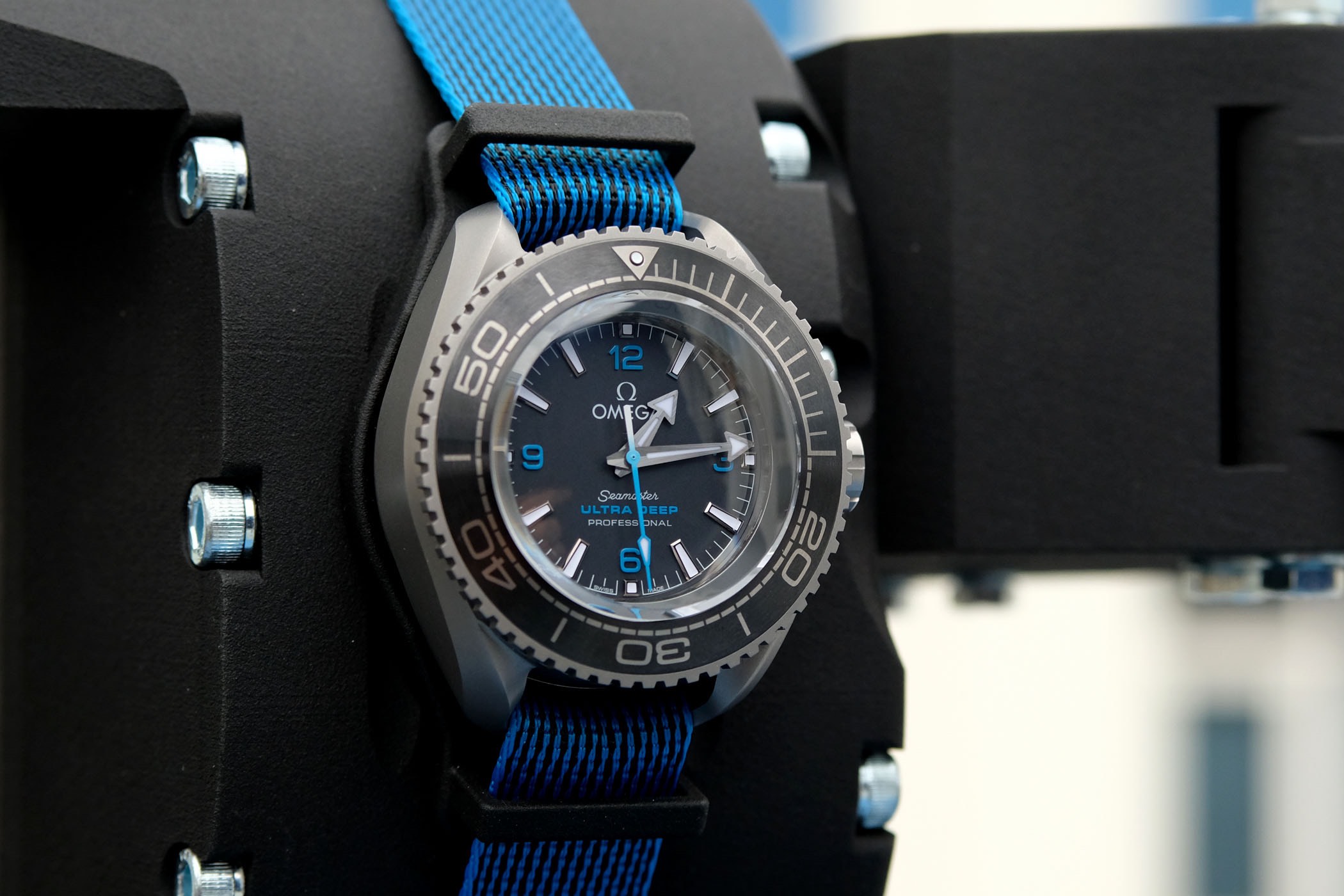
This Planet Ocean collection already served as a vessel for the development of what’s basically THE most advanced dive watch ever created, the Seamaster Planet Ocean Ultra Deep Professional. When attached to the exterior of the submarine piloted by Victor Vescovo, during the Five Deeps Expedition, this watch made it to the deepest point known by mankind, when it made its world record dive of 10,928 metres in the Mariana Trench. And the watch itself… It’s capable of resisting a pressure of 1,500 bars (thus a depth of 15,000 meters). It packs everything the brand is capable of and has been designed using technologies borrowed from the actual submarine.
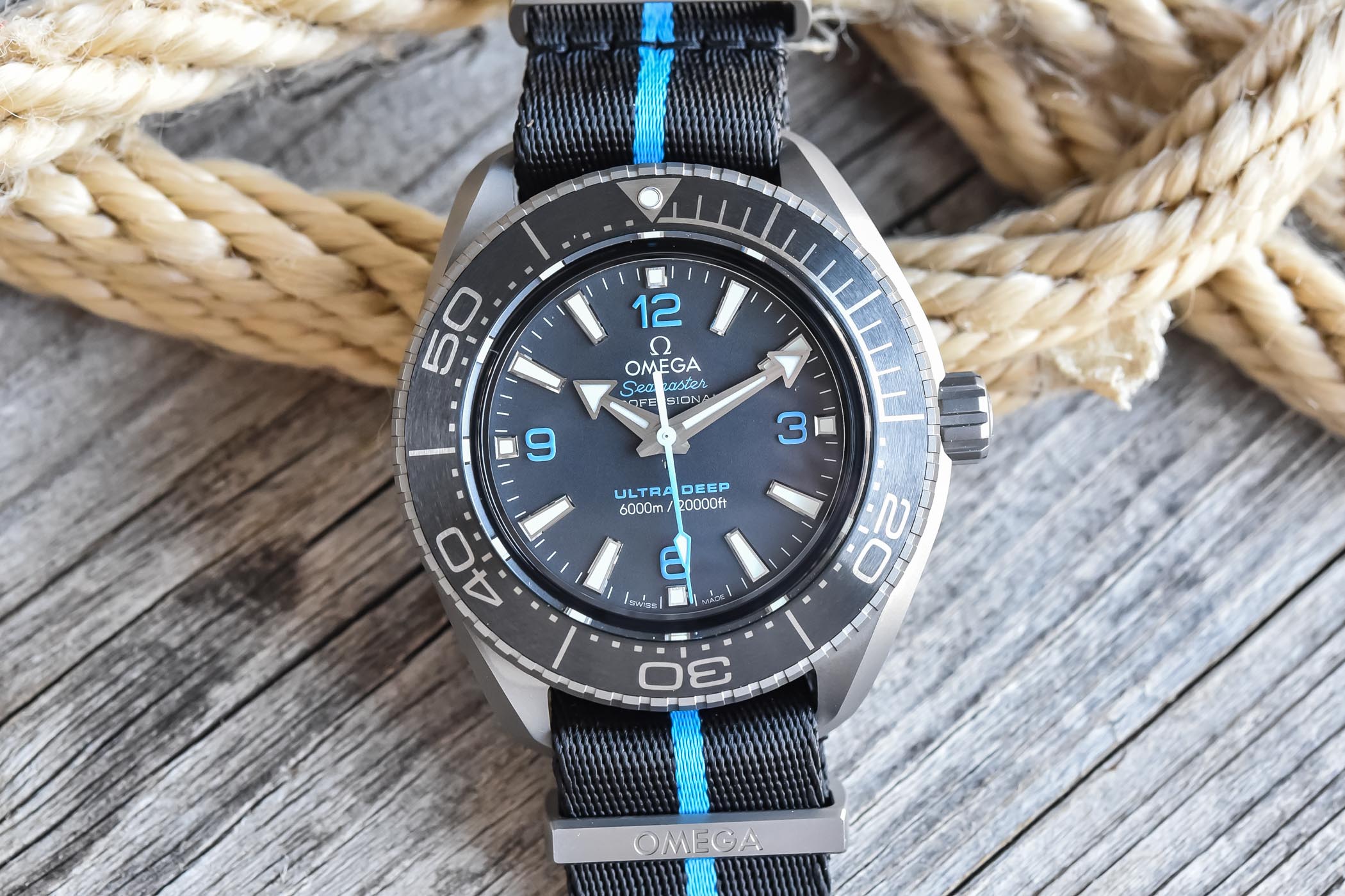
Omega is a brand that doesn’t really believe in technical achievements for the sole purpose of communication. As such, the development team believed that some of the solutions used in the Ultra Deep prototype had to find their way to the wrist of hardcore dive watch enthusiasts – let’s be honest, this new collection is a niche product. And this results in this new Omega Seamaster Planet Ocean Ultra Deep 6,000m collection, available in a stand-alone titanium version directly modelled after the Five Deeps Expedition’s prototypes, and this collection of models made in a brand new alloy named O-MegaSteel.
The new O-MegaSteel alloy
It has to be mentioned, but Omega is a pioneering brand when it comes to metallurgy and the creation of specific alloys. First of all, the brand is now known as the first to have ever used 904L steel for a watch, back in the early 1970s, with the Ploprof Research Program (back then this alloy was named Uranus steel). Now, if you look at the brand’s portfolio, you’ll see that most precious alloys are unique to Omega (or shared with some brands of the Swatch Group). Omega indeed used Sedna Gold (pink gold), Canopus gold (white gold) or Moonshine gold (pale yellow gold). Titanium is also widely used by the brand, and now it’s time for a specific steel alloy to enter the race.
Dubbed O-MegaSteel (pun very much intended), this alloy aims at bringing better specifications in almost all areas. A nickel-free alloy, it is said to bring better hypoallergenic properties, as well as better resistance to corrosion. Then, it’s colour is fairly more white than classic 316L or 904L alloys, resulting in more shine – the pendant is that it’s fairly more complex to machine and polish.
Mechanically mostly, that’s where O-MegaSteel gives its best results. Regarding yield strength, it offers approximately twice more resistance than other steel alloys. As a comparison, 316L steel is given for 200-250 MPa (depending on the alloys), 904L is given for 220 MPa and grade 5 titanium for 800-900 MPa. O-MegaSteel is announced for 560 MPa, which indicates a resistance to stress and fraction at least twice superior to other traditional alloys.
As for hardness, which in real life indicates the resistance to scratches and thus the ability to keep your watch clean and shiny, 316L steel has a hardness of 200 HV, 904L steel has a hardness of 175 HV and the new O-MegaSteel has a hardness of 300 HV, so about 40% better than classic steel alloys.
All of these elements combined make for a new alloy with great mechanical properties, but also an alloy that is perfectly adapted to luxury watchmaking and dive watches.
The new Seamaster Planet Ocean Ultra Deep collection
In addition to the stand-alone titanium model, Omega is releasing 6 new references of the Planet Ocean Ultra Deep in stainless steel. And there are noticeable differences between the titanium and steel models, and not only regarding the materials. The titanium version mostly is an evocation of the watch that made it to the bottom of the Marina Trench. And while sharing the same specifications, the O-MegaSteel models are rather different in execution and even in case design.
Looking at the specification sheet for the Planet Ocean Ultra Deep O-MegaSteel models, you’ll notice identical diameter – 45.5mm – and height – 18.12mm. Yet, the case has a different shape with a symmetrical design and a crown protection module that is rather new for Omega. Also, the lyre-lugs have been redesigned for something more instrumental, more modern too. Finally, the lug-to-lug dimension, if nothing short, is about 52mm – which isn’t exaggerated for a watch of this size. As for the diving specifications, we have here again the 5.2mm semi-conical EFG sapphire crystal (a new defect-free process), with a shape that is inspired by the porthole of the Five Deeps submarine, for an even distribution of the stress when the pressure rises. The crown also uses this same construction, so is the caseback and altogether, there are 4 patents pending regarding the case architecture. And yes, the watch is water-resistant to 6,000m or 600 bars (and in reality the watches are tested to 7,500 metres due to a 25% safety margin), making it one of the most impressive models ever to be commercialized.
There are other drastic differences between these Planet Ocean Ultra Deep O-MegaSteel models and the titanium version. For instance, the unidirectional bezel is here fitted with a polished ceramic insert, where the 60-minute scale is obtained thanks to Liquidmetal technology. The watch is free of helium escape valve despite being compliant with saturation diving and it meets the ISO 6425 standard for saturation divers’ watches, which is certified by Switzerland’s independent testing body METAS alongside the magnetic resistance and accuracy of the movement – a premiere in the watch industry.
On the wrist, no doubt that the Planet Ocean Ultra Deep, specifically these slightly less instrumental and shinner O-MegaSteel models, make a statement… Weight and size, even on the steel bracelet, will remind you that you’re wearing a true instrument meant to dive deeper than you’ll ever imagine. Surely, it’s all about technical achievements and it makes for a watch that won’t be at its place at the office. But the over-engineered feel, packed with technologies all around, makes it quite a cool model.
The watches of the Seamaster Planet Ocean Ultra Deep O-MegaSteel collection are available either on an integrated rubber strap (22/18mm) with pin buckle or a steel bracelet. The latter shows a new design, with larger polished bevels on the sides, new 3-link construction and a clasp that is a proper micro-machine, with the patented rack-and-pusher micro-adjustment and with an extra diver extension.
Not counting the differentiation between steel or rubber, there are 3 main versions of the Omega Seamaster Planet Ocean Ultra Deep available. The first has a gradient blue-black dial with a black bezel. The second has a gradient grey-black dial with an orange bezel. Finally, there’s a solid white dial with a blue bezel. On all versions, the dials are classically painted (not ceramic) with a transparent lacquer. On top, you’ll find usual PO-style elements, such as the applied hour markers, the applied Arabic numerals and the broad-arrow hands. All elements are here made of 18k white gold and filled with white Super-LumiNova.
Inside the case is the in-house, Master Chronometer certified calibre 8912, an automatic movement with 2 barrels, 3.5Hz frequency, 60h power reserve and co-axial escapement. All of Omega’s technologies have been integrated, such as the practical time zone function, the silicon “Si14” balance spring, a free sprung-balance and of course the magnetic resistance to 15,000 gauss. The movement is here hidden under a solid steel caseback, composed of two elements and with newly developed gaskets. It is laser-engraved with a sonar pattern and the seahorse logo – and the decoration will always be aligned.
Availability & Price
The watches of the Omega Seamaster Planet Ocean Ultra Deep O-MegaSteel collection will soon be available and are part of the permanent portfolio. They will retail at EUR 11,800 on rubber strap and EUR 12,100 on steel bracelet.
For more details, please visit omegawatches.com.


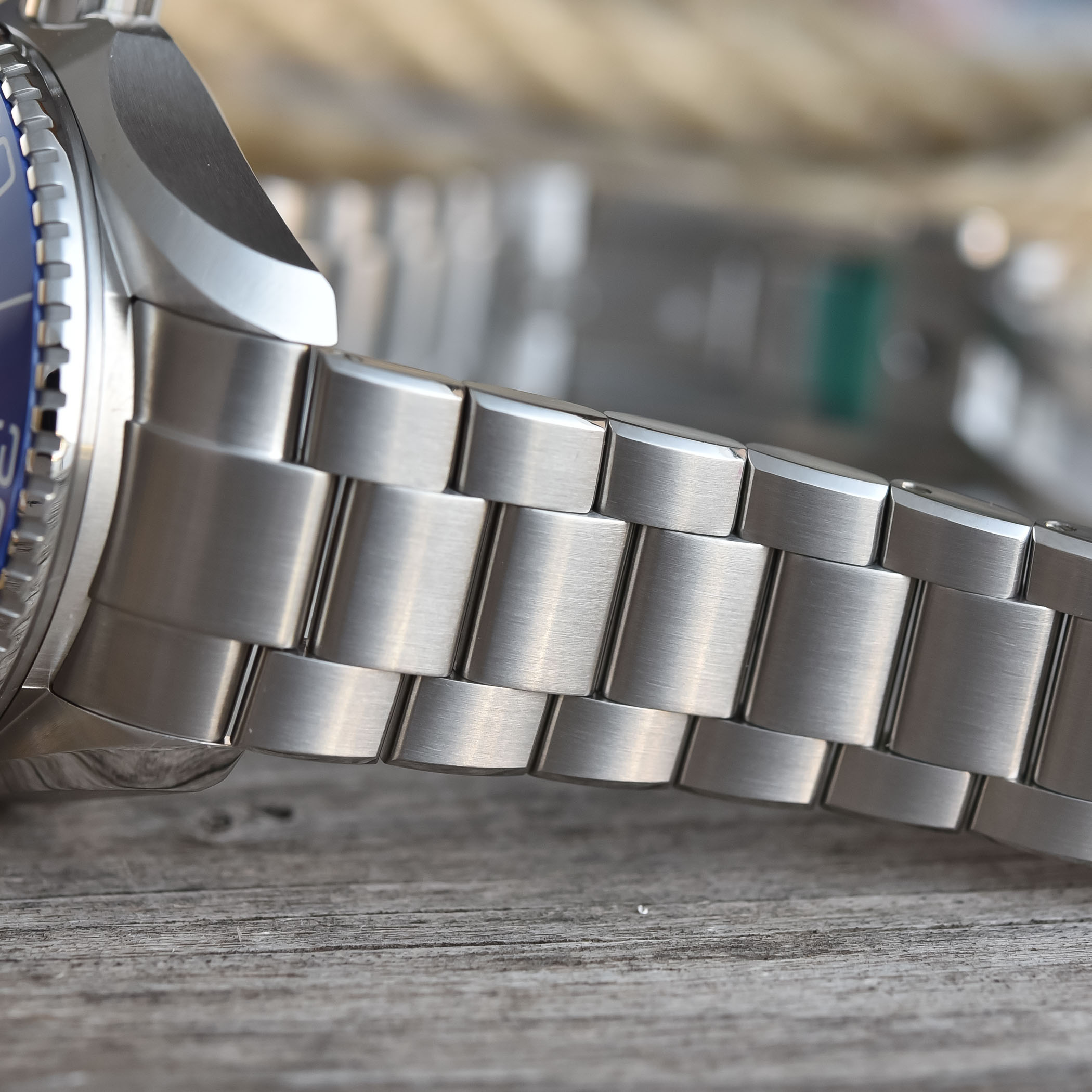
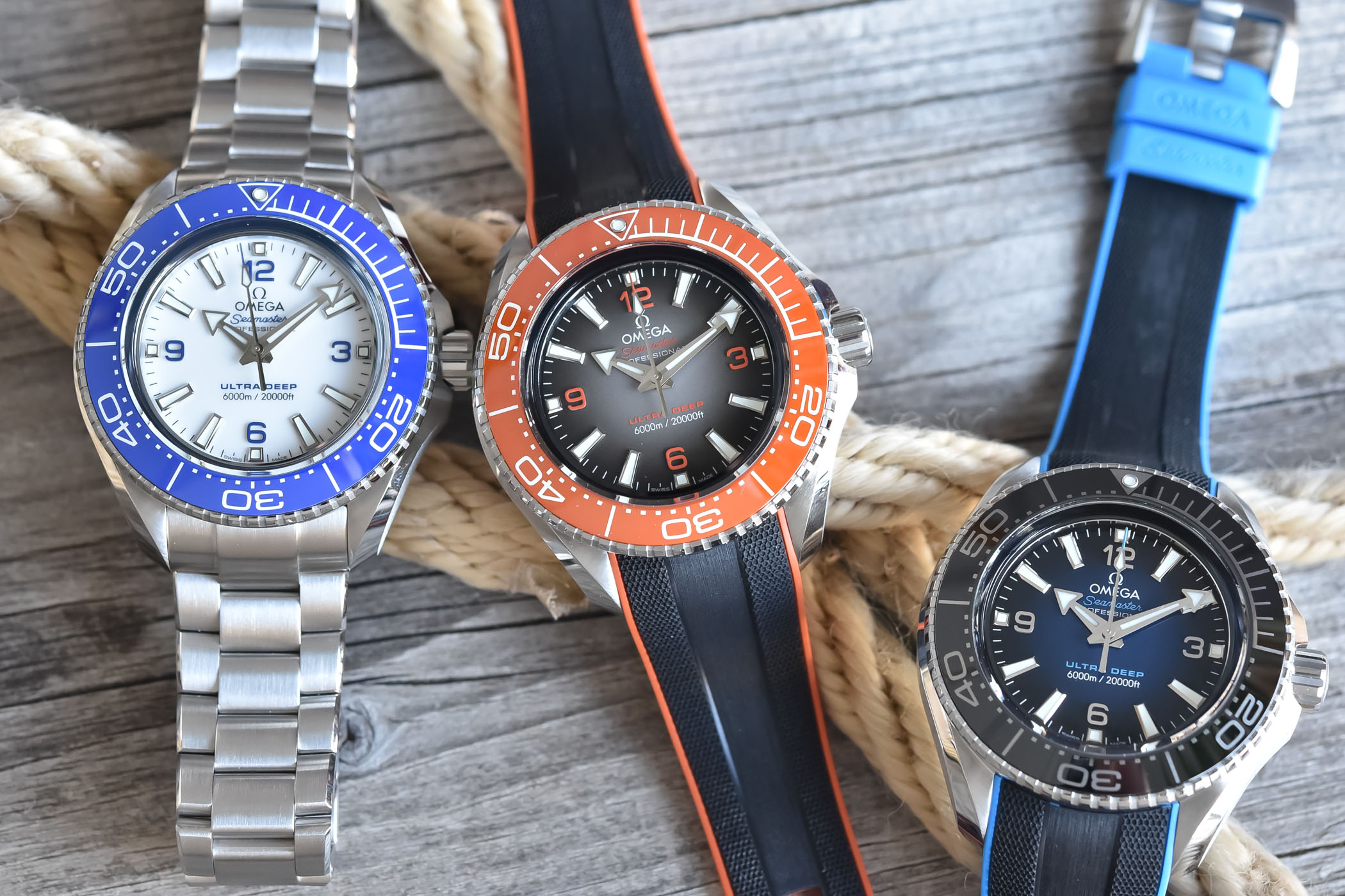
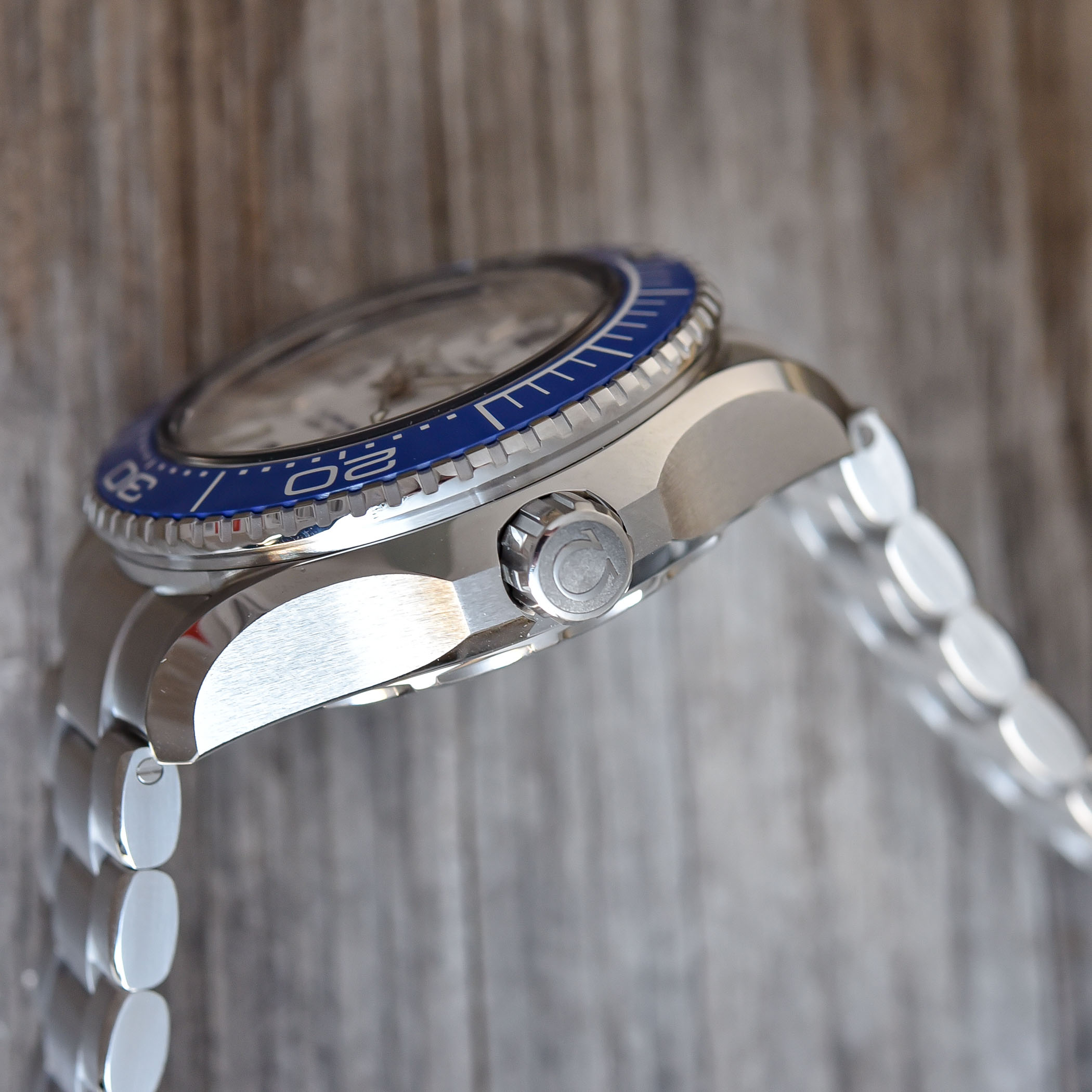
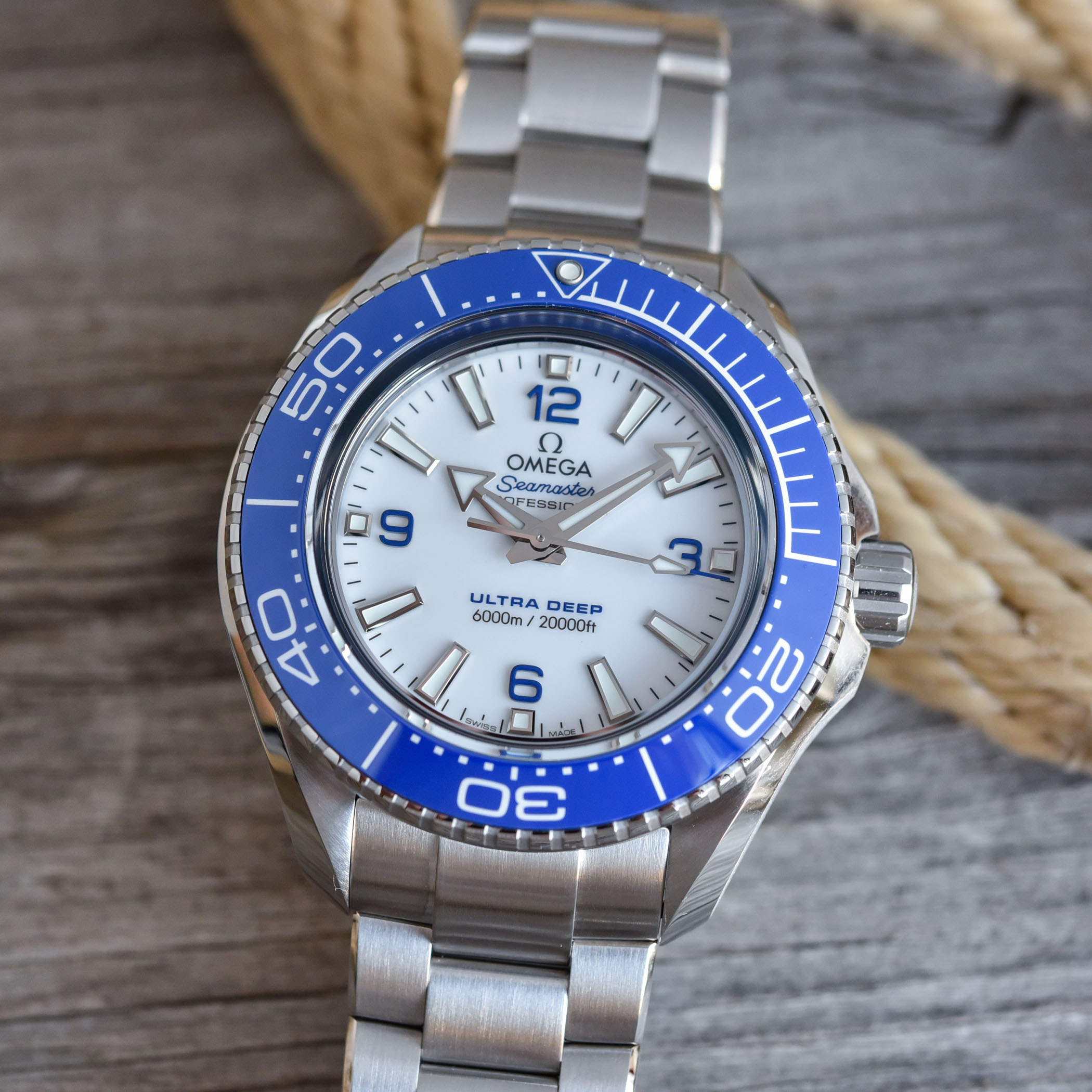

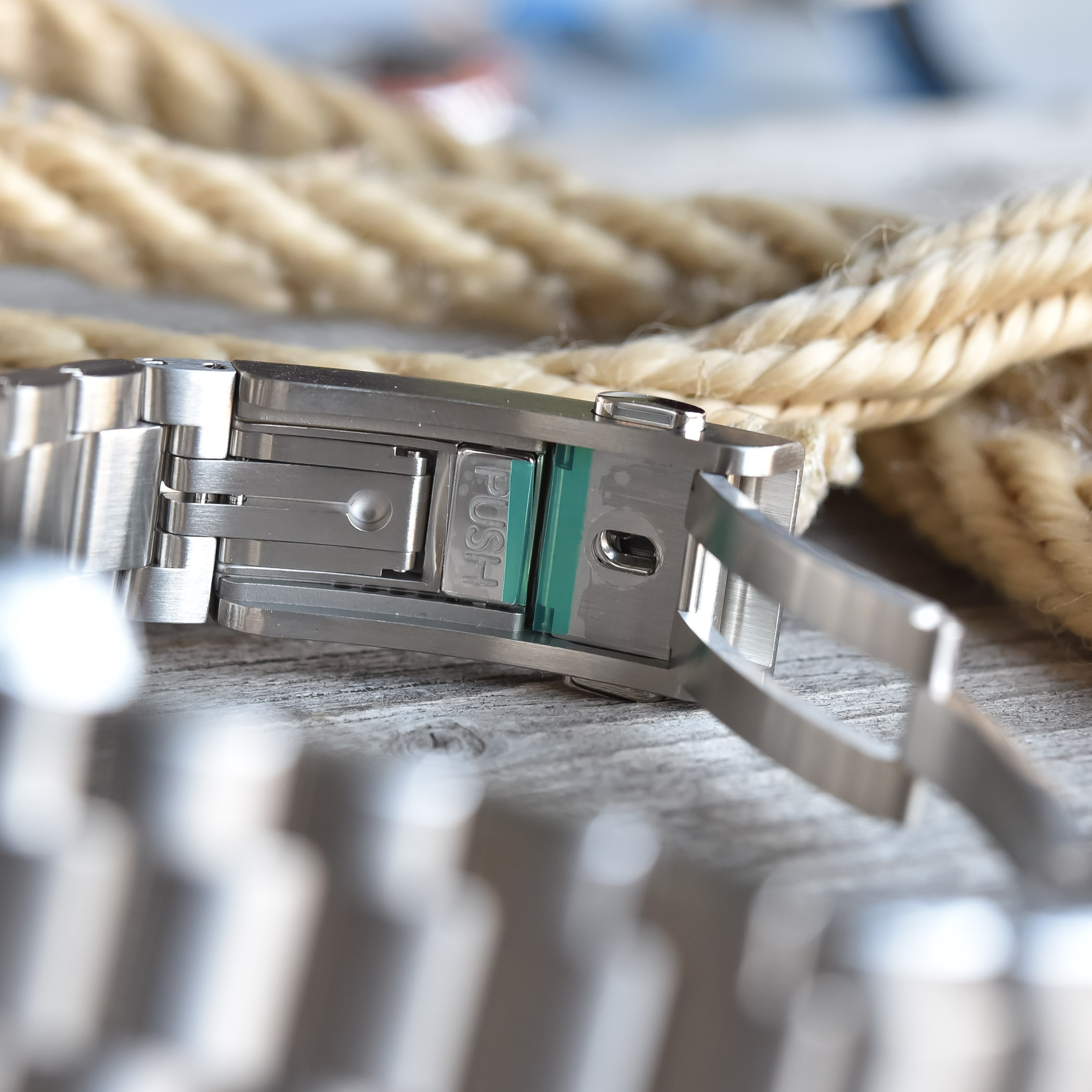
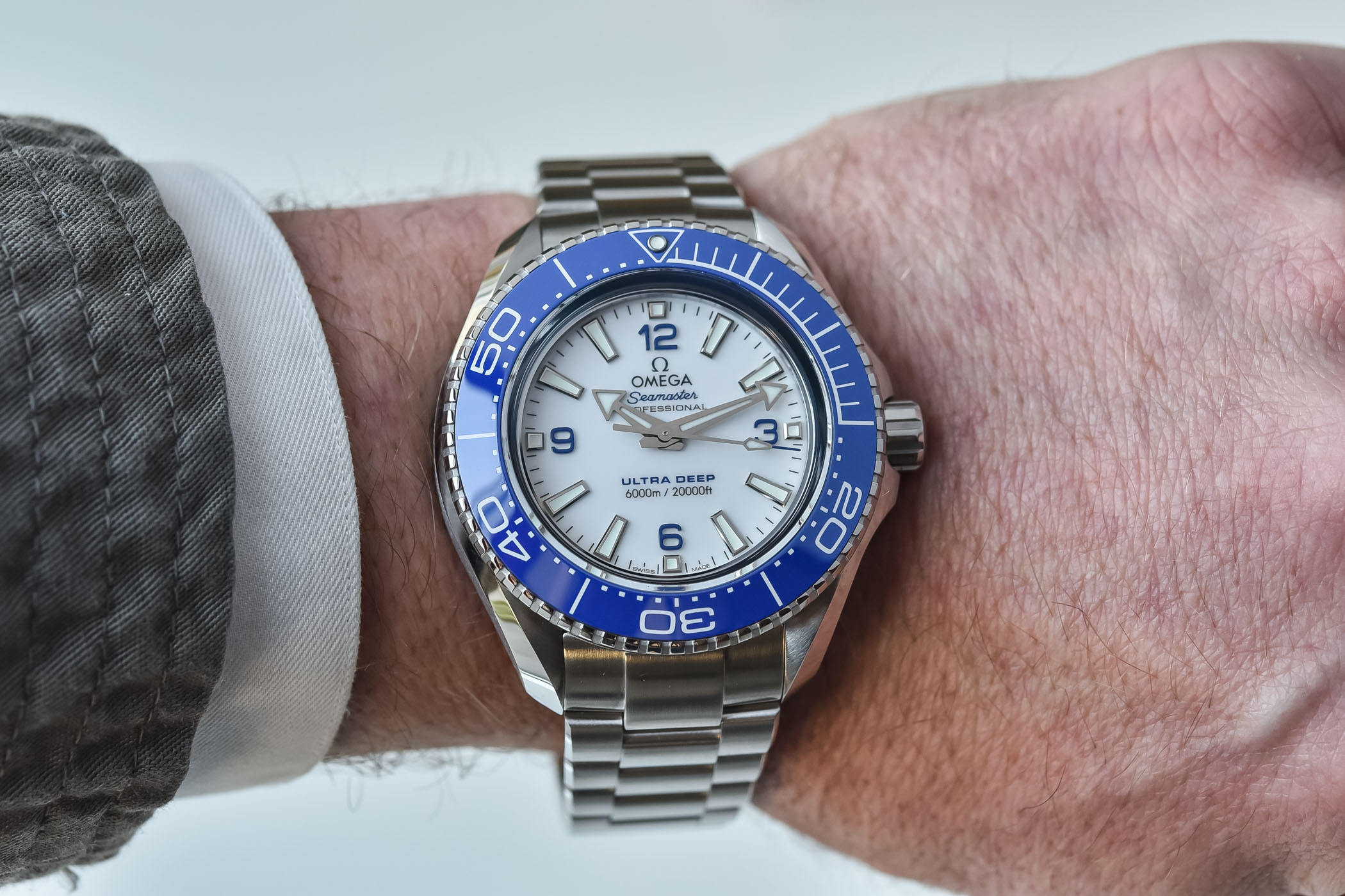
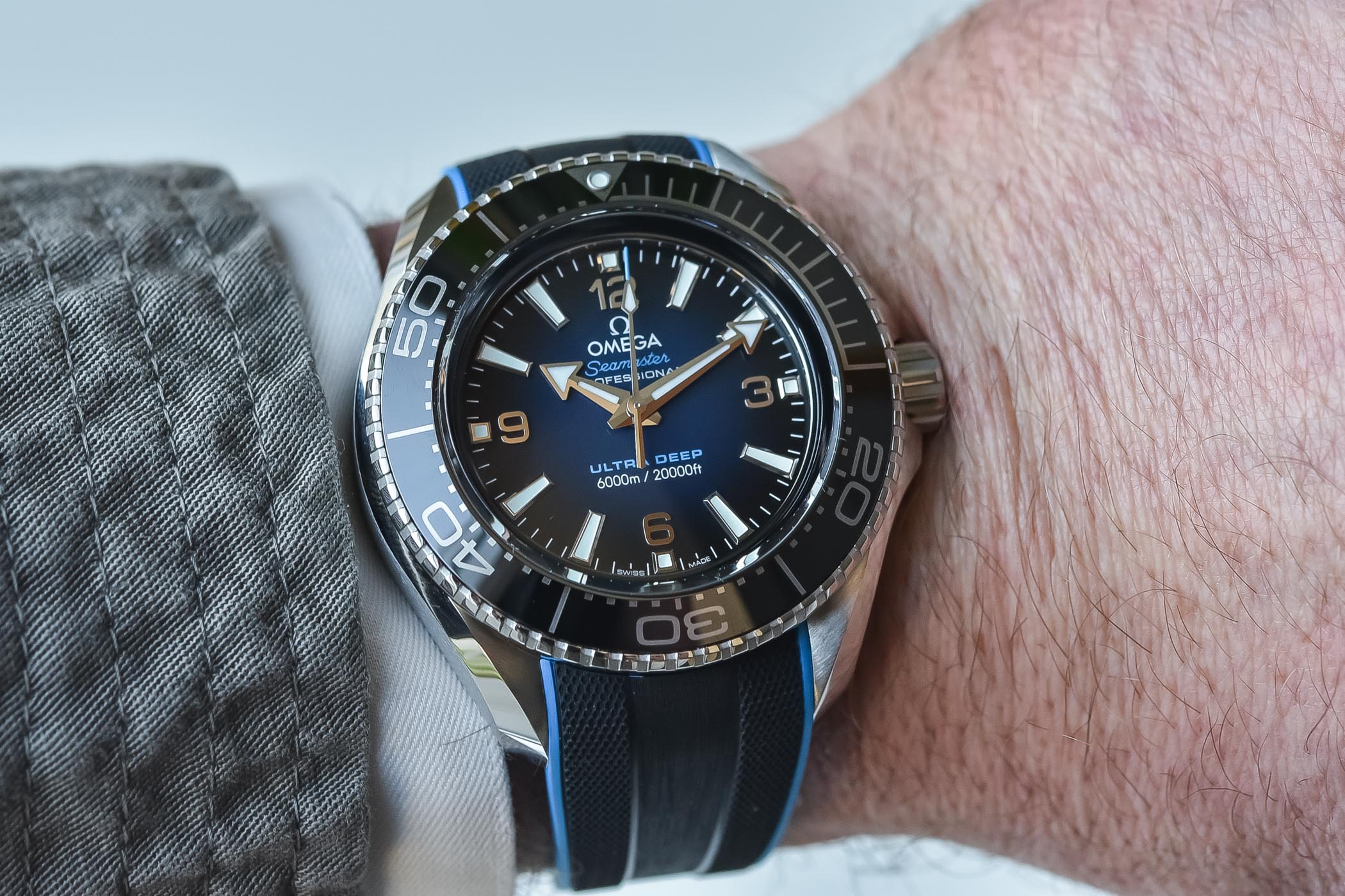
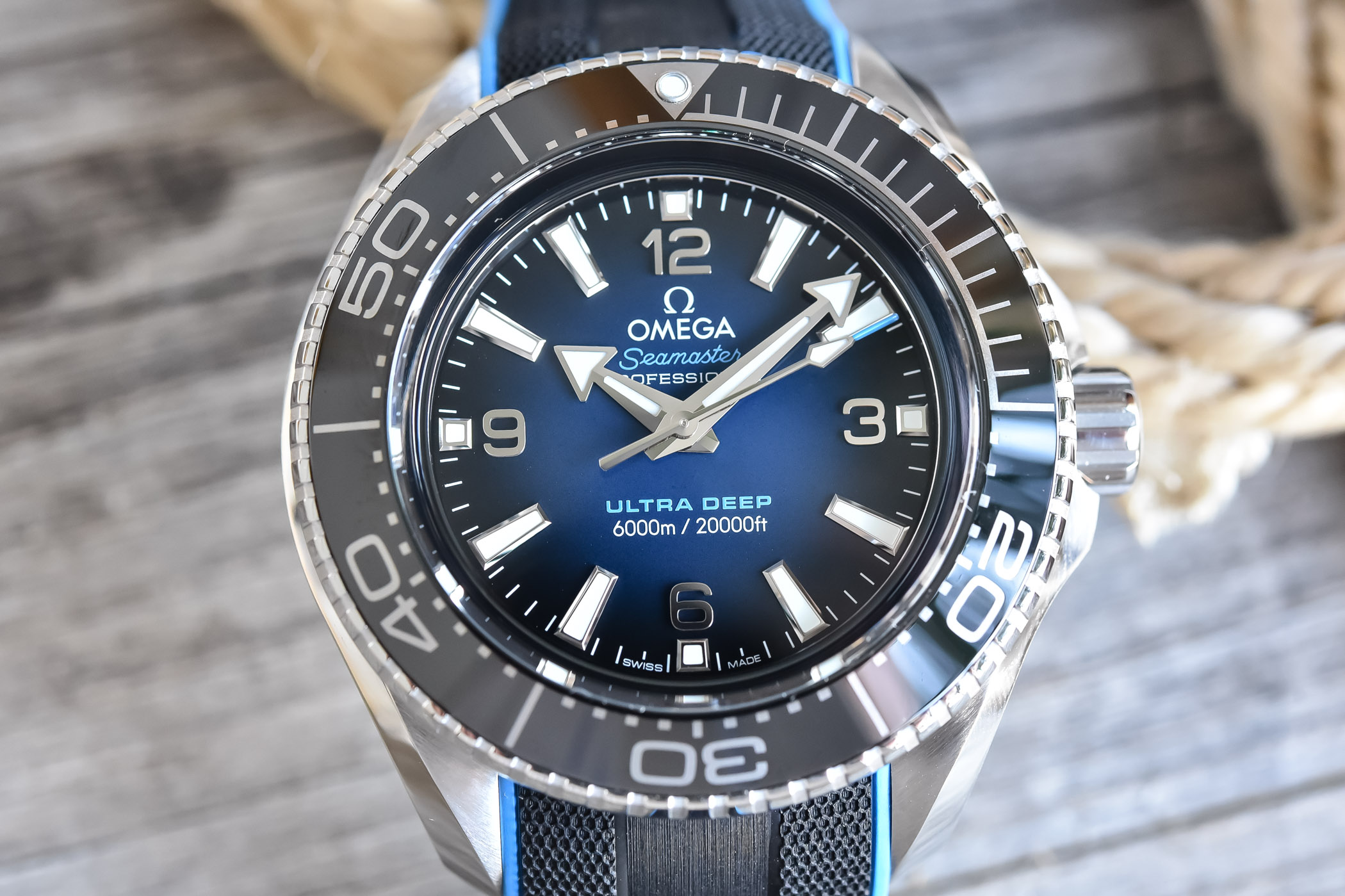
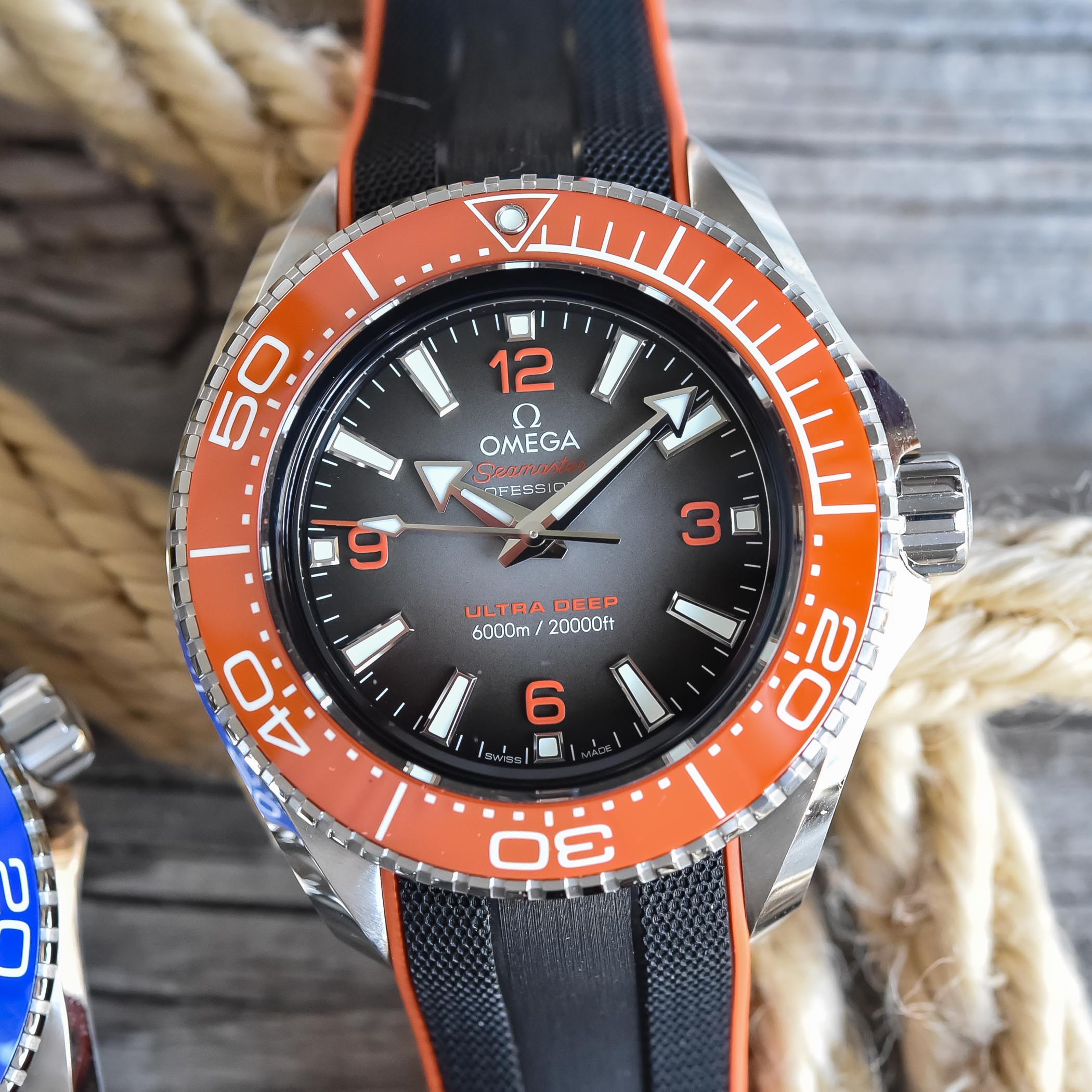
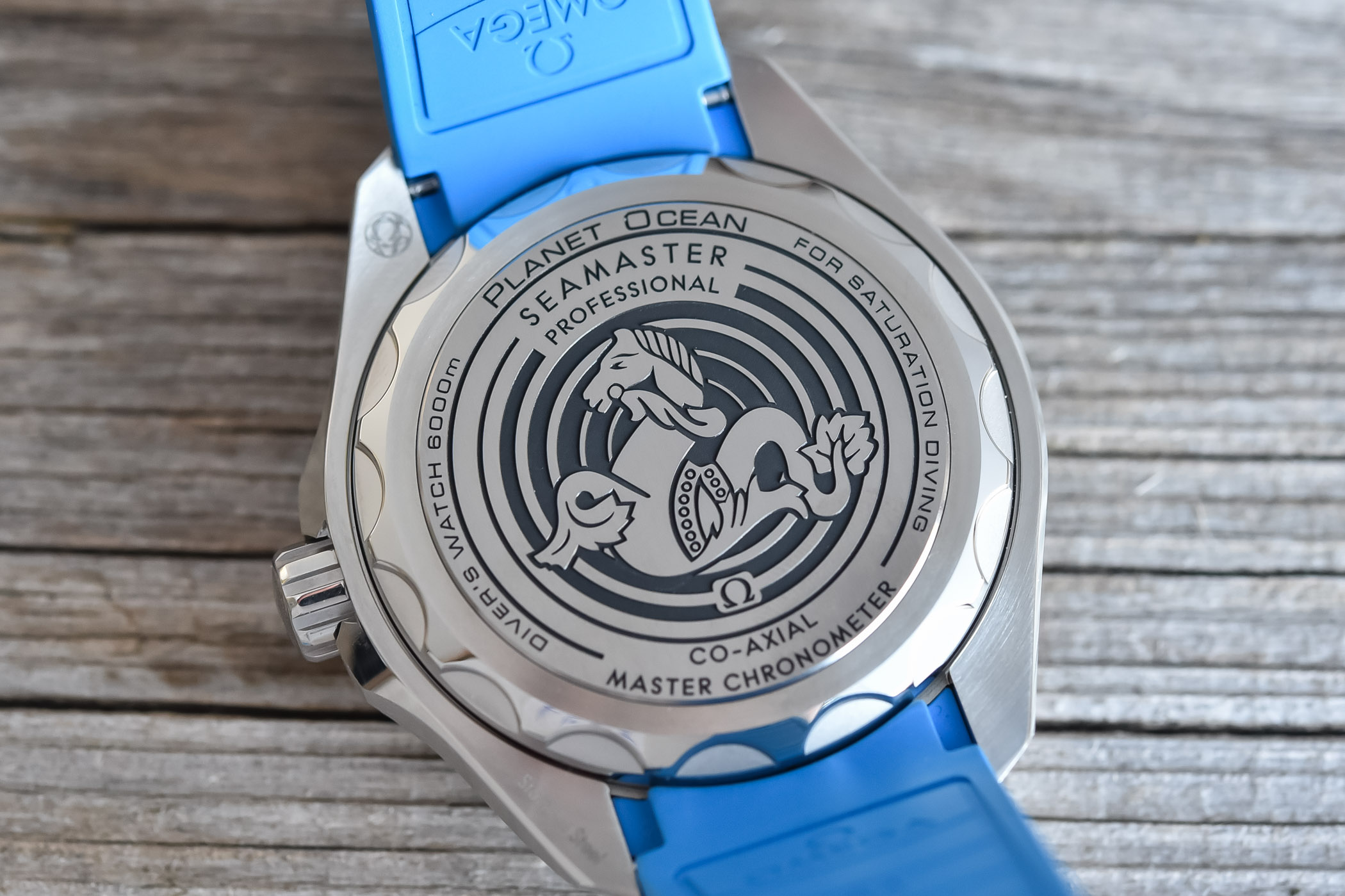
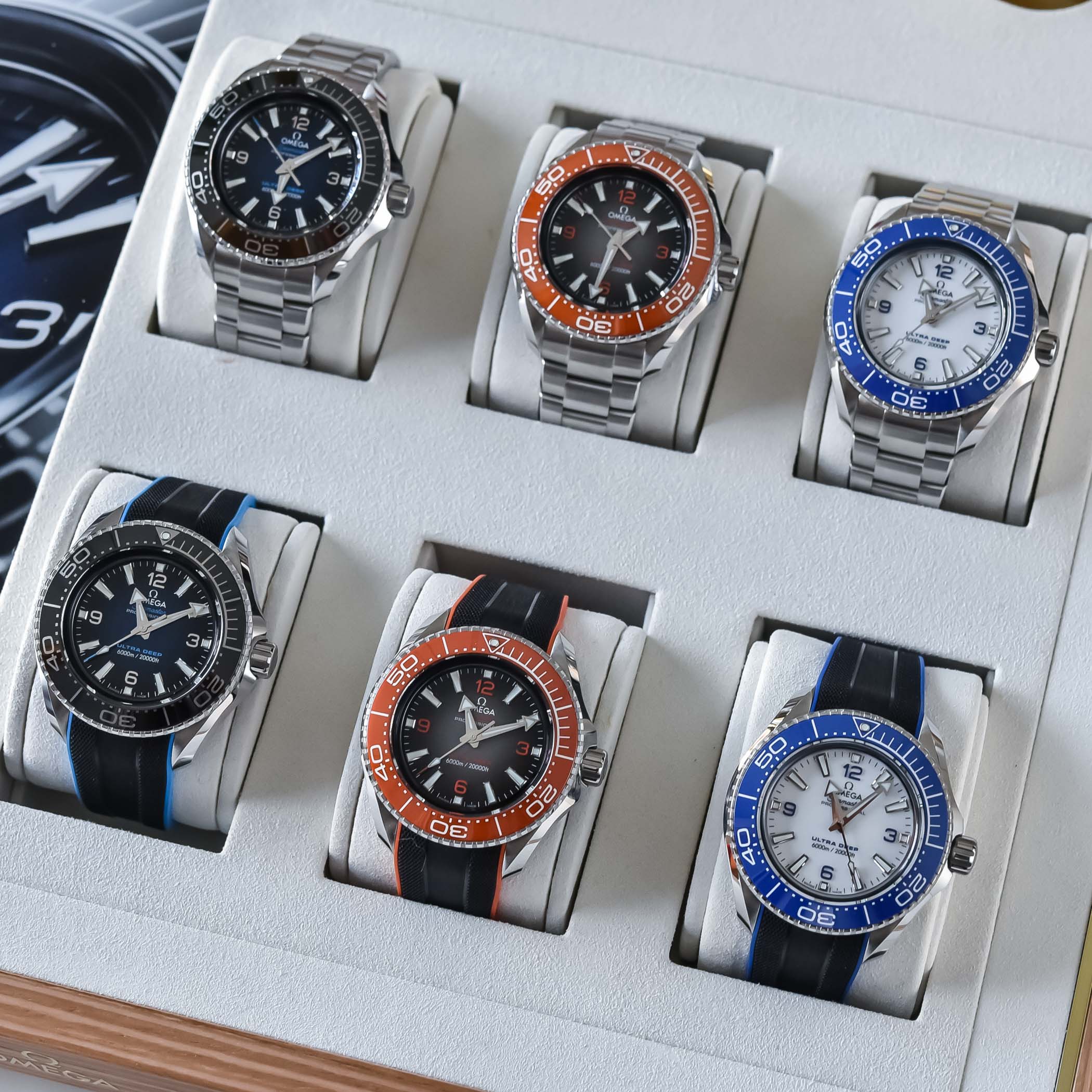



6 responses
Thank you, once again, for an interesting and informative article on the new steel alloy and of course the watches made from it. What is very interesting is the comparative properties of 904L steel (a.k.a “Oystersteel” when used by Rolex), 316L steel and this new version of 316L steel as used by Omega. Essentially 316L steel is harder and more scratch resistant than 904L steel, which will come as a bit of shock to Rolex fans who seem to think 904L steel is harder and more scratch resistant thus justifying the perceived “premium” over 316L steel. The reality is 904L steel is harder to machine and get “hard” or “sharp” edges as the additional chromium in the alloy causes uneven edges at a microscopic level resulting in “soft” edges. This is why Rolex watches tend to have smoother edges than other brands. The main difference between 904L and 316L steel is the increased resistance to some forms of corrosion of 904L steel. However this increased resistance to corrosion is for all practical purposes of marginal utility as the difference only becomes apparent if a steel component is kept immersed in saline water for years at a time in which case 904L steel is a better choice for such a component than 316L steel. The main industrial use for 904L steel is for valve components in maritime applications where the component is always submerged in sea water. Over a period of 15 years or so the additional resistance of 904L steel to sea water is of benefit. Unless a watch collector keeps their watches fully submerged in water for more than 15 years there is going to be no difference in corrosion resistance as between 904L steel and 316L steel watches. One of the benefits of the new 316L steel used by Omega is its increased resistance to twisting and deformation under high pressures. This should ensure the Ultra Deep watches can withstand the pressure of 750 Bar they have been designed to resist. As for a helium escape valve, the Ultra Deep does actually have one – the crown. As a helium escape valve is not needed until the diver is in a decompression chamber and thus out of the water the crown can be used to allow helium atoms to escape. The extremely rigid case is also likely to contribute to a watch that will not let helium into the watch in the first place.
@SPQR – and again, a highly interesting comment !!!
Ok I’m convinced . Omega is now technically superior to Rolex watches. So when can we expect Rolex A D’s to have stock on hand in their showrooms ?
That is a stellar watch with a price to match. Just about a Euro per meter down it went.
i do know why dose omega think orange and brown could be a good combination. orange and purple if you want to go bold, orange and black or white if you want to go traditional. it gose even fresh with blue and grey. but why brown?
Big Rolex fan here having owned 116660 Cameron, 126600 Sea Dweller Red and also 126660 Cameron. However off of specs alone can’t wait to get my hands on this new Ultra Deep on steel and black/blue gradient. Should be a DSSD killer once it’s released. Can’t wait to get one in September when they’re finally out.